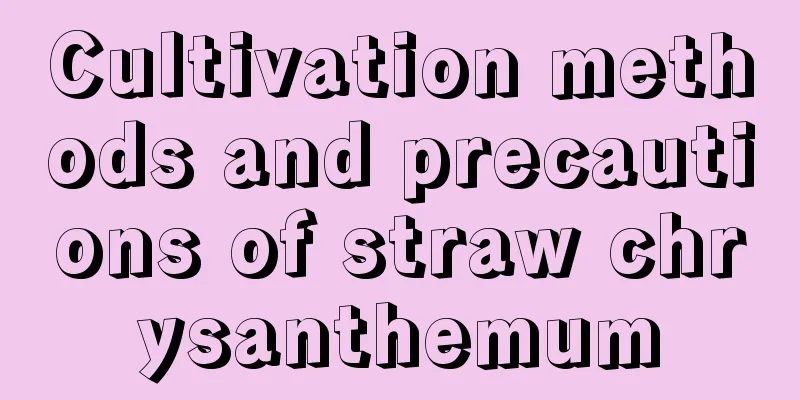Cultivation methods and precautions of straw chrysanthemum

How to cultivate straw daisyTemperature ManagementStraw daisy likes a warm climate, and the most suitable growth temperature is 15-25℃. It is not cold-resistant and avoids extreme heat. The temperature in summer cannot be higher than 34℃, and it will go dormant or die when the temperature is below 4℃ in winter. Lighting ManagementStraw daisy needs to be maintained under shade conditions in spring, summer and autumn. When the temperature is high and there is direct sunlight, the leaves will become noticeably smaller, the internodes of the branches will shorten, the base leaves will turn yellow and fall off, and the plant will grow very slowly or enter a semi-dormant state. In winter, since the temperature is not very high, direct sunlight can be irradiated. Water and fertilizer managementLike other flowers, straw daisy has high requirements for water and fertilizer, but it is required to follow the watering and fertilizing principles of "light fertilizer, frequent application, small amounts and frequent applications, and complete nutrition". Spring and autumn are the peak growth seasons for straw daisy, and the demand for water and fertilizer is relatively large. It enters a dormant state during the high temperature period in summer and does not require much fertilizer and water, and even needs to be controlled. Watering should be arranged in the morning when the temperature is lower, and the leaves should be kept dry at night. Also, mist the plants frequently. During the winter dormancy period, the main thing is to control fertilizer and water, and try to arrange watering at noon on sunny days when the temperature is higher. Pay attention to rainy weather and water the strawflower less or not at all. Things to note when growing straw chrysanthemumToppingDuring its growth period, strawflower needs to be topped and pruned frequently. Generally, pinching is done twice before flowering to encourage the growth of more flowering branches. Removing the top of the strawflower in the early stages of its growth can promote branching. 3 to 5 weeks after the first pinching, you can do the second pinching, remove the top of the side branch, and keep the 4 leaves below the side branch. After two pinchings, the plant shape will be more ideal and the number of flowers will be greater. Reproduction methodWhen propagating straw daisy, you can use sowing, cuttings, and layering. |
<<: When does yellow rose bloom?
>>: Home cultivation methods and precautions of Agapanthus
Recommend
Does the Black Mage prefer Yin or Yang?
Does the Black Mage prefer Yin or Yang? Black Mag...
How to prune a miniature coconut
1. Why do you need to prune? During the growth pr...
How to grow purple water lilies so they bloom
Purple water lily flowering time Purple water lil...
The Flower Language and Legend of Blue Flower
The flower language of blue dandelion The flower ...
Causes and treatments for yellow leaves of purple-leaf plum
1. Insufficient light Reason: Purple-leaf plum li...
Don’t throw away these 10 kinds of fruit seeds, they will be beautiful when grown into potted plants!
1. Pitaya The specific method is to cut the drago...
How to grow pussy willow
1. Soil When growing pussy willow, use fertile, w...
How often should roses be fertilized and what kind of fertilizer should be used
How often should you fertilize roses? 1. The meth...
Leek planting and management technology, leek planting pictures
1. Adequate sunlight Chives are relatively light-...
Management and fertilization of amaranth planting
Amaranth is a vegetable that many people like to ...
How often should dragon fruit be watered?
How often should dragon fruit be watered? During ...
Cultivation methods and precautions of wolfberry bonsai
1. Maintenance methods 1. Soil: Bonsai planting h...
What is the best month to plant spring vegetables?
When to plant spring vegetables Spring vegetables...
Cultivation methods and precautions of Dieffenbachia
1. Breeding methods 1. Temperature: Dieffenbachia...
How potatoes reproduce
Reproduction methods: breeding and sowing. Breedi...









